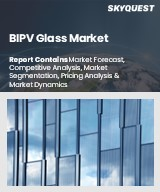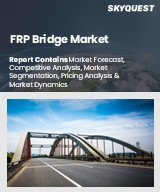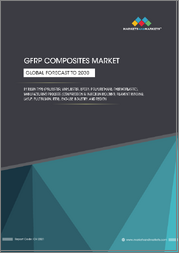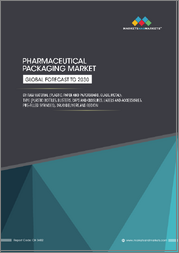
|
시장보고서
상품코드
1573044
세계의 붕규산 유리관 시장 : 제품 유형, 제조 공정, 용도별 예측(2025-2030년)Borosilicate Glass Tube Market by Product Types (Amber Borosilicate Glass Tubes, Clear Borosilicate Glass Tubes, Coated Borosilicate Glass Tubes), Manufacturing Process (Blowing, Casting, Drawing), Application - Global Forecast 2025-2030 |
||||||
붕규산 유리관 시장은 2023년에 19억 달러로 평가되었고, 2024년에는 20억 3,000만 달러에 이를 것으로 예측되며, CAGR 7.28%로 성장하고, 2030년에는 31억 1,000만 달러에 달할 것으로 예측됩니다.
실리카와 삼산화붕소로 만들어진 붕규산 유리관은 높은 내열성, 저팽창성, 내구성으로 유명하며 다양한 산업에서 필수적입니다. 그 용도는 화학 실험실, 의료기기, 조리 기구, 전자 기기, 조명 기구 등 다방면에 걸칩니다. 붕규산 유리의 필요성은 엄격한 온도 변화와 부식 환경을 견딜 수 있는 능력으로 인해 과학 연구소 및 산업 공정에 중요한 요소입니다. 붕규산 유리는 제품의 순도와 안정성을 유지하는 능력으로부터 의약품 포장에 널리 사용되고 있으며, 태양에너지의 이용과 전달의 효율성으로부터 태양열 에너지 시스템에도 사용되고 있습니다. 시장 성장은 의료 및 기술 산업 수요 증가, 화학 연구의 진보, 재생 가능 에너지 수요 증가에 영향을 받고 있습니다. 지속가능하고 내구성 있는 소재를 중시하게 되어 투명하고 고강도의 소재가 불가결한 일렉트로닉스나 반도체 산업이 확대됨으로써 비즈니스 기회가 탄생하고 있습니다. 이러한 기회를 활용하려는 기업의 경우 생산 능력을 강화하고 열적 및 광학적 특성에 대한 최첨단 연구에 투자함으로써 혁신적인 용도와 재료에 대한 길을 열 수 있습니다. 과제로는 공급 체인의 단절이나 원재료 조달의 비용 압박, 석영 유리 등 같은 특성을 가진 대체 재료와의 격렬한 경쟁 등을 들 수 있습니다. 기술 혁신은 붕규산 유리의 생산 효율을 향상시키는 제조 공정, 취성의 추가 감소 및 재활용성 향상과 같은 기타 이점을 제공하는 복합재료의 개발에 집중할 수 있습니다. 시장은 여전히 역동적이며 기술 동향과 환경 문제에 따라 성장 기회가 크게 확산되고 이해 관계자는 한계를 해결하고 신흥 산업의 새로운 동향에 대응하기위한 연구 개발에 주력하고 있습니다.
| 주요 시장 통계 | |
|---|---|
| 기준년(2023) | 19억 달러 |
| 예측년(2024) | 20억 3,000만 달러 |
| 예측년(2030) | 31억 1,000만 달러 |
| CAGR(%) | 7.28% |
시장 역학: 급속히 진화하는 붕규산 유리관 시장의 주요 시장 인사이트 공개
붕규산 유리관 시장은 수요 및 공급의 역동적인 상호 작용에 의해 변모를 이루고 있습니다. 이러한 시장 역학의 진화를 이해함으로써 기업은 충분한 정보를 바탕으로 투자결정, 전략적 결정 정밀화, 새로운 비즈니스 기회 획득에 대비할 수 있습니다. 이러한 동향을 종합적으로 파악함으로써 기업은 정치적, 지리적, 기술적, 사회적, 경제적 영역에 걸친 다양한 위험을 완화할 수 있으며, 소비자 행동과 그것이 제조 비용과 구매 동향에 미치는 영향을보다 명확하게 이해할 수 있습니다.
- 시장 성장 촉진요인
- 태양열 집열기에 붕규산 유리관을 이용하는 재생 가능 에너지 프로젝트의 확대
- 내식성·내열성 붕규산 유리관을 필요로 하는 화학 처리 산업의 성장
- 뛰어난 식품안전성과 위생기준을 위해 붕규산 유리관을 채용하는 식음료업계의 급증
- 미관 및 구조 목적으로 붕규산 유리관을 사용하는 건축 용도 증가
- 시장 성장 억제요인
- 붕규산 유리관의 생산에 필요한 원재료의 입수 제한과 고비용
- 시장 기회
- 신재생에너지 분야, 특히 태양에너지와 풍력에너지에 있어서의 붕규산 유리관의 새로운 비즈니스 기회
- 고급 미관 조명기구나 장식 기구의 제조에 있어서의 붕규산 유리관의 사용 확대
- 특수 광학 기기나 과학 연구용 정밀 기기에 있어서의 붕규산 유리관의 용도 확대
- 시장의 과제
- 붕규산 유리 제품의 재활용과 폐기물 관리에 있어서의 과제
Porter's Five Forces : 붕규산 유리관 시장을 탐색하는 전략 도구
Porter's Five Forces 프레임 워크는 시장 상황경쟁 구도를 이해하는 중요한 도구입니다. Porter's Five Force Framework는 기업의 경쟁력을 평가하고 전략적 기회를 탐구하는 명확한 기술을 제공합니다. 이 프레임워크는 기업이 시장 내 세력도를 평가하고 신규 사업의 수익성을 판단하는 데 도움이 됩니다. 이러한 통찰을 통해 기업은 자사의 강점을 활용하고, 약점을 해결하고, 잠재적인 과제를 피할 수 있으며, 보다 강인한 시장에서의 포지셔닝을 보장할 수 있습니다.
PESTLE 분석 : 붕규산 유리관 시장에서 외부로부터의 영향 파악
외부 거시 환경 요인은 붕규산 유리관 시장의 성과 역학을 형성하는데 매우 중요한 역할을 합니다. 정치적, 경제적, 사회적, 기술적, 법적, 환경적 요인 분석은 이러한 영향을 탐색하는 데 필요한 정보를 제공합니다. PESTLE 요인을 조사함으로써 기업은 잠재적인 위험과 기회를 더 잘 이해할 수 있습니다. 이 분석을 통해 기업은 규제, 소비자 선호, 경제 동향의 변화를 예측하고 앞으로 예상되는 적극적인 의사 결정을 할 준비를 할 수 있습니다.
시장 점유율 분석 : 붕규산 유리관 시장 경쟁 구도 파악
붕규산 유리관 시장의 상세한 시장 점유율 분석을 통해 공급업체의 성과를 종합적으로 평가할 수 있습니다. 기업은 수익, 고객 기반, 성장률 등 주요 지표를 비교하여 경쟁 포지셔닝을 밝힐 수 있습니다. 이 분석을 통해 시장 집중, 단편화, 통합 동향을 밝혀내고 벤더들은 경쟁이 치열해지는 가운데 자사의 지위를 높이는 전략적 의사 결정을 내리는 데 필요한 지식을 얻을 수 있습니다.
FPNV 포지셔닝 매트릭스 : 붕규산 유리관 시장에서 공급업체의 성능 평가
FPNV 포지셔닝 매트릭스는 붕규산 유리관 시장에서 공급업체를 평가하는 중요한 도구입니다. 이 행렬을 통해 비즈니스 조직은 공급업체의 비즈니스 전략과 제품 만족도를 기준으로 평가하여 목표에 맞는 충분한 정보를 바탕으로 의사 결정을 내릴 수 있습니다. 네 가지 사분면을 통해 공급업체를 명확하고 정확하게 세분화하여 전략 목표에 가장 적합한 파트너 및 솔루션을 파악할 수 있습니다.
전략 분석 및 권장 : 붕규산 유리관 시장에서 성공에 대한 길을 그립니다.
붕규산 유리관 시장의 전략 분석은 세계 시장에서의 프레즌스 강화를 목표로 하는 기업에 필수적입니다. 주요 자원, 역량 및 성과 지표를 검토함으로써 기업은 성장 기회를 파악하고 개선을 위해 노력할 수 있습니다. 이러한 접근 방식을 통해 경쟁 구도에서 과제를 극복하고 새로운 비즈니스 기회를 활용하여 장기적인 성공을 거둘 수 있는 체제를 구축할 수 있습니다.
이 보고서는 주요 관심 분야를 포괄하는 시장의 종합적인 분석을 제공합니다.
1. 시장 침투: 현재 시장 환경의 상세한 검토, 주요 기업의 광범위한 데이터, 시장 도달범위 및 전반적인 영향력 평가.
2. 시장 개척도: 신흥 시장의 성장 기회를 파악하고 기존 분야의 확장 가능성을 평가하며 미래 성장을 위한 전략적 로드맵을 제공합니다.
3. 시장 다양화: 최근 제품 출시, 미개척 지역, 업계의 주요 진보, 시장을 형성하는 전략적 투자를 분석합니다.
4. 경쟁 평가 및 정보 : 경쟁 구도를 철저히 분석하여 시장 점유율, 사업 전략, 제품 포트폴리오, 인증, 규제 당국 승인, 특허 동향, 주요 기업의 기술 진보 등을 검증합니다.
5. 제품 개발 및 혁신 : 미래 시장 성장을 가속할 것으로 예상되는 최첨단 기술, R&D 활동, 제품 혁신을 강조합니다.
또한 이해관계자가 충분한 정보를 얻고 의사결정을 할 수 있도록 중요한 질문에 대답하고 있습니다.
1. 현재 시장 규모와 향후 성장 예측은?
2. 최고의 투자 기회를 제공하는 제품, 부문 및 지역은 어디입니까?
3. 시장을 형성하는 주요 기술 동향과 규제의 영향은?
4. 주요 벤더의 시장 점유율과 경쟁 포지션은?
5. 벤더 시장 진입·철수 전략의 원동력이 되는 수익원과 전략적 기회는 무엇인가?
목차
제1장 서문
제2장 조사 방법
제3장 주요 요약
제4장 시장 개요
제5장 시장 인사이트
- 시장 역학
- 성장 촉진요인
- 태양열 집열기에 붕규산 유리관을 이용한 재생 가능 에너지 프로젝트의 확대
- 내부식성 및 내열성 붕규산 유리관을 필요로 하는 화학 처리 산업의 성장
- 식품 및 음료 업계에서는 식품의 안전성과 위생 기준의 향상을 목적으로 붕규산 유리관의 채용이 급증하고 있습니다.
- 미관과 구조상의 목적으로 붕규산 유리관을 사용하는 건축 용도 증가
- 억제요인
- 붕규산 유리관의 생산에 필요한 원재료의 입수가 한정되어 있어, 비용이 높다
- 기회
- 신재생에너지 분야, 특히 태양광과 풍력에너지에 있어서의 붕규산 유리관의 새로운 기회
- 고급 미적 조명이나 장식 기구의 제조에 있어서의 붕규산 유리관의 사용 증가
- 과학 연구용 특수 광학 기기나 정밀 기기에 있어서의 붕규산 유리관의 용도 확대
- 과제
- 붕규산 유리 제품의 재활용과 폐기물 관리의 과제
- 성장 촉진요인
- 시장 세분화 분석
- Porter's Five Forces 분석
- PESTEL 분석
- 정치적
- 경제
- 사교
- 기술적
- 법률상
- 환경
제6장 붕규산 유리관 시장 : 제품 유형별
- 호박 붕규산 유리관
- 투명 붕규산 유리관
- 코팅 붕규산 유리관
- 반사 방지 코팅
- 소수성 코팅
- UV 코팅
- 착색 붕규산 유리관
- 청색
- 녹색
- 적색
제7장 붕규산 유리관 시장 : 제조 공정별
- 블로잉
- 유리 블로잉
- 정밀 블로잉
- 주조
- 다이 캐스팅
- 모래 주조
- 그리기
- 대너법
- 직접 그리기
- 성형
- 압출 성형
- 사출 성형
제8장 붕규산 유리관 시장 : 용도별
- 항공우주 및 방어
- 계기장치
- 보호 케이스
- 일렉트로닉스 및 반도체
- 디스플레이 패널
- 절연 튜브
- 산업
- 게이지 글라스
- 절연체
- 프로브
- 연구실에서의 사용
- 피펫
- 표본 용기
- 시험관
- 의약품 포장
- 앰풀
- 카트리지
- 주사기
- 바이알
- 태양광 발전
- 태양전지
- 태양열 수집기
제9장 아메리카의 붕규산 유리관 시장
- 아르헨티나
- 브라질
- 캐나다
- 멕시코
- 미국
제10장 아시아태평양의 붕규산 유리관 시장
- 호주
- 중국
- 인도
- 인도네시아
- 일본
- 말레이시아
- 필리핀
- 싱가포르
- 한국
- 대만
- 태국
- 베트남
제11장 유럽·중동 및 아프리카의 붕규산 유리관 시장
- 덴마크
- 이집트
- 핀란드
- 프랑스
- 독일
- 이스라엘
- 이탈리아
- 네덜란드
- 나이지리아
- 노르웨이
- 폴란드
- 카타르
- 러시아
- 사우디아라비아
- 남아프리카
- 스페인
- 스웨덴
- 스위스
- 터키
- 아랍에미리트(UAE)
- 영국
제12장 경쟁 구도
- 시장 점유율 분석 2023
- FPNV 포지셔닝 매트릭스, 2023
- 경쟁 시나리오 분석
- 전략 분석과 제안
The Borosilicate Glass Tube Market was valued at USD 1.90 billion in 2023, expected to reach USD 2.03 billion in 2024, and is projected to grow at a CAGR of 7.28%, to USD 3.11 billion by 2030.
Borosilicate glass tube, made from silica and boron trioxide, is renowned for its high thermal resistance, low expansion, and durability, making it essential in various industries. Its scope includes applications within chemical laboratories, medical devices, cookware, electronics, and lighting. The necessity of borosilicate glass stems from its ability to withstand severe temperature changes and corrosive environments, a critical factor for scientific research labs and industrial processes. It is widely used in pharmaceutical packaging because of its ability to maintain the purity and stability of products, as well as in solar thermal energy systems due to its efficiency in harnessing and transferring solar energy. Market growth is influenced by increasing demand in the healthcare and technology industries, advancements in chemical research, and rising renewable energy demands. Opportunities are emerging with the growing emphasis on sustainable and durable materials and the expansion of electronics and semiconductor industries where transparent and high-strength materials are indispensable. For companies looking to capitalize on these opportunities, enhancing production capabilities and investing in cutting-edge research on thermal and optical properties could pave the way for innovative applications and materials. Challenges include supply chain disruptions and cost pressures raw material procurement, along with intense competition from alternative materials with similar properties, such as quartz glass. Innovation may focus on manufacturing processes to improve the efficiency of borosilicate glass production or on developing composite materials that offer additional benefits, like further reduced brittleness or enhanced recyclability. The market remains dynamic, with robust opportunities for growth driven by technology trends and environmental concerns, encouraging stakeholders to focus on research and development to address limitations and capitalize on evolving demands in emerging industries.
| KEY MARKET STATISTICS | |
|---|---|
| Base Year [2023] | USD 1.90 billion |
| Estimated Year [2024] | USD 2.03 billion |
| Forecast Year [2030] | USD 3.11 billion |
| CAGR (%) | 7.28% |
Market Dynamics: Unveiling Key Market Insights in the Rapidly Evolving Borosilicate Glass Tube Market
The Borosilicate Glass Tube Market is undergoing transformative changes driven by a dynamic interplay of supply and demand factors. Understanding these evolving market dynamics prepares business organizations to make informed investment decisions, refine strategic decisions, and seize new opportunities. By gaining a comprehensive view of these trends, business organizations can mitigate various risks across political, geographic, technical, social, and economic domains while also gaining a clearer understanding of consumer behavior and its impact on manufacturing costs and purchasing trends.
- Market Drivers
- Expansion of renewable energy projects utilizing borosilicate glass tubes in solar thermal collectors
- Growth of the chemical processing industry requiring corrosion-resistant and heat-resistant borosilicate glass tubes
- Surge in the food and beverage industry adopting borosilicate glass tubes for superior food safety and hygiene standards
- Increase in architectural applications using borosilicate glass tubes for aesthetic and structural purposes
- Market Restraints
- Limited availability and high cost of raw materials necessary for borosilicate glass tube production
- Market Opportunities
- Emerging opportunities for borosilicate glass tubes in the renewable energy sector, particularly solar and wind energy
- Growing use of borosilicate glass tubes in the production of high-end aesthetic lighting and decorative fixtures
- Expansion of borosilicate glass tubes application in specialized optical devices and precision instruments for scientific research
- Market Challenges
- Challenges in recycling and waste management of borosilicate glass based products
Porter's Five Forces: A Strategic Tool for Navigating the Borosilicate Glass Tube Market
Porter's five forces framework is a critical tool for understanding the competitive landscape of the Borosilicate Glass Tube Market. It offers business organizations with a clear methodology for evaluating their competitive positioning and exploring strategic opportunities. This framework helps businesses assess the power dynamics within the market and determine the profitability of new ventures. With these insights, business organizations can leverage their strengths, address weaknesses, and avoid potential challenges, ensuring a more resilient market positioning.
PESTLE Analysis: Navigating External Influences in the Borosilicate Glass Tube Market
External macro-environmental factors play a pivotal role in shaping the performance dynamics of the Borosilicate Glass Tube Market. Political, Economic, Social, Technological, Legal, and Environmental factors analysis provides the necessary information to navigate these influences. By examining PESTLE factors, businesses can better understand potential risks and opportunities. This analysis enables business organizations to anticipate changes in regulations, consumer preferences, and economic trends, ensuring they are prepared to make proactive, forward-thinking decisions.
Market Share Analysis: Understanding the Competitive Landscape in the Borosilicate Glass Tube Market
A detailed market share analysis in the Borosilicate Glass Tube Market provides a comprehensive assessment of vendors' performance. Companies can identify their competitive positioning by comparing key metrics, including revenue, customer base, and growth rates. This analysis highlights market concentration, fragmentation, and trends in consolidation, offering vendors the insights required to make strategic decisions that enhance their position in an increasingly competitive landscape.
FPNV Positioning Matrix: Evaluating Vendors' Performance in the Borosilicate Glass Tube Market
The Forefront, Pathfinder, Niche, Vital (FPNV) Positioning Matrix is a critical tool for evaluating vendors within the Borosilicate Glass Tube Market. This matrix enables business organizations to make well-informed decisions that align with their goals by assessing vendors based on their business strategy and product satisfaction. The four quadrants provide a clear and precise segmentation of vendors, helping users identify the right partners and solutions that best fit their strategic objectives.
Strategy Analysis & Recommendation: Charting a Path to Success in the Borosilicate Glass Tube Market
A strategic analysis of the Borosilicate Glass Tube Market is essential for businesses looking to strengthen their global market presence. By reviewing key resources, capabilities, and performance indicators, business organizations can identify growth opportunities and work toward improvement. This approach helps businesses navigate challenges in the competitive landscape and ensures they are well-positioned to capitalize on newer opportunities and drive long-term success.
Key Company Profiles
The report delves into recent significant developments in the Borosilicate Glass Tube Market, highlighting leading vendors and their innovative profiles. These include AGC Inc., Borax Morarji Ltd., Cangzhou Four-star Glass Co. Ltd., Corning Inc., De Dietrich Process Systems, Duran Group, Gerresheimer AG, Glassco Laboratory Equipments Pvt Ltd., Hilgenberg GmbH, JSG - Japan Scientific Glass, Kavalierglass, a.s., Kimble Chase Life Science and Research Products LLC, Linuo Group Holdings Co., Ltd., NEG (Nippon Electric Glass Co., Ltd.), Nipro Pharma Corporation, Northstar Glassworks Inc., Schott AG, Shandong Yaohua Glass Co., Ltd., and TOYO GLASS CO., LTD..
Market Segmentation & Coverage
This research report categorizes the Borosilicate Glass Tube Market to forecast the revenues and analyze trends in each of the following sub-markets:
- Based on Product Types, market is studied across Amber Borosilicate Glass Tubes, Clear Borosilicate Glass Tubes, Coated Borosilicate Glass Tubes, and Colored Borosilicate Glass Tubes. The Coated Borosilicate Glass Tubes is further studied across Anti-Reflective Coating, Hydrophobic Coating, and UV Coating. The Colored Borosilicate Glass Tubes is further studied across Blue, Green, and Red.
- Based on Manufacturing Process, market is studied across Blowing, Casting, Drawing, and Molding. The Blowing is further studied across Glass Blowing and Precision Blowing. The Casting is further studied across Die Casting and Sand Casting. The Drawing is further studied across Danner Process and Direct Drawing. The Molding is further studied across Extrusion Molding and Injection Molding.
- Based on Application, market is studied across Aerospace and Defense, Electronics and Semiconductors, Industrial, Laboratory Use, Pharmaceutical Packaging, and Solar and Photovoltaic. The Aerospace and Defense is further studied across Instrumentation and Protective Casings. The Electronics and Semiconductors is further studied across Display Panels and Insulating Tubes. The Industrial is further studied across Gauge Glasses, Insulators, and Probes. The Laboratory Use is further studied across Pipettes, Specimen Containers, and Test Tubes. The Pharmaceutical Packaging is further studied across Ampoules, Cartridges, Syringes, and Vials. The Solar and Photovoltaic is further studied across Photovoltaic Cells and Solar Collectors.
- Based on Region, market is studied across Americas, Asia-Pacific, and Europe, Middle East & Africa. The Americas is further studied across Argentina, Brazil, Canada, Mexico, and United States. The United States is further studied across California, Florida, Illinois, New York, Ohio, Pennsylvania, and Texas. The Asia-Pacific is further studied across Australia, China, India, Indonesia, Japan, Malaysia, Philippines, Singapore, South Korea, Taiwan, Thailand, and Vietnam. The Europe, Middle East & Africa is further studied across Denmark, Egypt, Finland, France, Germany, Israel, Italy, Netherlands, Nigeria, Norway, Poland, Qatar, Russia, Saudi Arabia, South Africa, Spain, Sweden, Switzerland, Turkey, United Arab Emirates, and United Kingdom.
The report offers a comprehensive analysis of the market, covering key focus areas:
1. Market Penetration: A detailed review of the current market environment, including extensive data from top industry players, evaluating their market reach and overall influence.
2. Market Development: Identifies growth opportunities in emerging markets and assesses expansion potential in established sectors, providing a strategic roadmap for future growth.
3. Market Diversification: Analyzes recent product launches, untapped geographic regions, major industry advancements, and strategic investments reshaping the market.
4. Competitive Assessment & Intelligence: Provides a thorough analysis of the competitive landscape, examining market share, business strategies, product portfolios, certifications, regulatory approvals, patent trends, and technological advancements of key players.
5. Product Development & Innovation: Highlights cutting-edge technologies, R&D activities, and product innovations expected to drive future market growth.
The report also answers critical questions to aid stakeholders in making informed decisions:
1. What is the current market size, and what is the forecasted growth?
2. Which products, segments, and regions offer the best investment opportunities?
3. What are the key technology trends and regulatory influences shaping the market?
4. How do leading vendors rank in terms of market share and competitive positioning?
5. What revenue sources and strategic opportunities drive vendors' market entry or exit strategies?
Table of Contents
1. Preface
- 1.1. Objectives of the Study
- 1.2. Market Segmentation & Coverage
- 1.3. Years Considered for the Study
- 1.4. Currency & Pricing
- 1.5. Language
- 1.6. Stakeholders
2. Research Methodology
- 2.1. Define: Research Objective
- 2.2. Determine: Research Design
- 2.3. Prepare: Research Instrument
- 2.4. Collect: Data Source
- 2.5. Analyze: Data Interpretation
- 2.6. Formulate: Data Verification
- 2.7. Publish: Research Report
- 2.8. Repeat: Report Update
3. Executive Summary
4. Market Overview
5. Market Insights
- 5.1. Market Dynamics
- 5.1.1. Drivers
- 5.1.1.1. Expansion of renewable energy projects utilizing borosilicate glass tubes in solar thermal collectors
- 5.1.1.2. Growth of the chemical processing industry requiring corrosion-resistant and heat-resistant borosilicate glass tubes
- 5.1.1.3. Surge in the food and beverage industry adopting borosilicate glass tubes for superior food safety and hygiene standards
- 5.1.1.4. Increase in architectural applications using borosilicate glass tubes for aesthetic and structural purposes
- 5.1.2. Restraints
- 5.1.2.1. Limited availability and high cost of raw materials necessary for borosilicate glass tube production
- 5.1.3. Opportunities
- 5.1.3.1. Emerging opportunities for borosilicate glass tubes in the renewable energy sector, particularly solar and wind energy
- 5.1.3.2. Growing use of borosilicate glass tubes in the production of high-end aesthetic lighting and decorative fixtures
- 5.1.3.3. Expansion of borosilicate glass tubes application in specialized optical devices and precision instruments for scientific research
- 5.1.4. Challenges
- 5.1.4.1. Challenges in recycling and waste management of borosilicate glass based products
- 5.1.1. Drivers
- 5.2. Market Segmentation Analysis
- 5.3. Porter's Five Forces Analysis
- 5.3.1. Threat of New Entrants
- 5.3.2. Threat of Substitutes
- 5.3.3. Bargaining Power of Customers
- 5.3.4. Bargaining Power of Suppliers
- 5.3.5. Industry Rivalry
- 5.4. PESTLE Analysis
- 5.4.1. Political
- 5.4.2. Economic
- 5.4.3. Social
- 5.4.4. Technological
- 5.4.5. Legal
- 5.4.6. Environmental
6. Borosilicate Glass Tube Market, by Product Types
- 6.1. Introduction
- 6.2. Amber Borosilicate Glass Tubes
- 6.3. Clear Borosilicate Glass Tubes
- 6.4. Coated Borosilicate Glass Tubes
- 6.4.1. Anti-Reflective Coating
- 6.4.2. Hydrophobic Coating
- 6.4.3. UV Coating
- 6.5. Colored Borosilicate Glass Tubes
- 6.5.1. Blue
- 6.5.2. Green
- 6.5.3. Red
7. Borosilicate Glass Tube Market, by Manufacturing Process
- 7.1. Introduction
- 7.2. Blowing
- 7.2.1. Glass Blowing
- 7.2.2. Precision Blowing
- 7.3. Casting
- 7.3.1. Die Casting
- 7.3.2. Sand Casting
- 7.4. Drawing
- 7.4.1. Danner Process
- 7.4.2. Direct Drawing
- 7.5. Molding
- 7.5.1. Extrusion Molding
- 7.5.2. Injection Molding
8. Borosilicate Glass Tube Market, by Application
- 8.1. Introduction
- 8.2. Aerospace and Defense
- 8.2.1. Instrumentation
- 8.2.2. Protective Casings
- 8.3. Electronics and Semiconductors
- 8.3.1. Display Panels
- 8.3.2. Insulating Tubes
- 8.4. Industrial
- 8.4.1. Gauge Glasses
- 8.4.2. Insulators
- 8.4.3. Probes
- 8.5. Laboratory Use
- 8.5.1. Pipettes
- 8.5.2. Specimen Containers
- 8.5.3. Test Tubes
- 8.6. Pharmaceutical Packaging
- 8.6.1. Ampoules
- 8.6.2. Cartridges
- 8.6.3. Syringes
- 8.6.4. Vials
- 8.7. Solar and Photovoltaic
- 8.7.1. Photovoltaic Cells
- 8.7.2. Solar Collectors
9. Americas Borosilicate Glass Tube Market
- 9.1. Introduction
- 9.2. Argentina
- 9.3. Brazil
- 9.4. Canada
- 9.5. Mexico
- 9.6. United States
10. Asia-Pacific Borosilicate Glass Tube Market
- 10.1. Introduction
- 10.2. Australia
- 10.3. China
- 10.4. India
- 10.5. Indonesia
- 10.6. Japan
- 10.7. Malaysia
- 10.8. Philippines
- 10.9. Singapore
- 10.10. South Korea
- 10.11. Taiwan
- 10.12. Thailand
- 10.13. Vietnam
11. Europe, Middle East & Africa Borosilicate Glass Tube Market
- 11.1. Introduction
- 11.2. Denmark
- 11.3. Egypt
- 11.4. Finland
- 11.5. France
- 11.6. Germany
- 11.7. Israel
- 11.8. Italy
- 11.9. Netherlands
- 11.10. Nigeria
- 11.11. Norway
- 11.12. Poland
- 11.13. Qatar
- 11.14. Russia
- 11.15. Saudi Arabia
- 11.16. South Africa
- 11.17. Spain
- 11.18. Sweden
- 11.19. Switzerland
- 11.20. Turkey
- 11.21. United Arab Emirates
- 11.22. United Kingdom
12. Competitive Landscape
- 12.1. Market Share Analysis, 2023
- 12.2. FPNV Positioning Matrix, 2023
- 12.3. Competitive Scenario Analysis
- 12.4. Strategy Analysis & Recommendation
Companies Mentioned
- 1. AGC Inc.
- 2. Borax Morarji Ltd.
- 3. Cangzhou Four-star Glass Co. Ltd.
- 4. Corning Inc.
- 5. De Dietrich Process Systems
- 6. Duran Group
- 7. Gerresheimer AG
- 8. Glassco Laboratory Equipments Pvt Ltd.
- 9. Hilgenberg GmbH
- 10. JSG - Japan Scientific Glass
- 11. Kavalierglass, a.s.
- 12. Kimble Chase Life Science and Research Products LLC
- 13. Linuo Group Holdings Co., Ltd.
- 14. NEG (Nippon Electric Glass Co., Ltd.)
- 15. Nipro Pharma Corporation
- 16. Northstar Glassworks Inc.
- 17. Schott AG
- 18. Shandong Yaohua Glass Co., Ltd.
- 19. TOYO GLASS CO., LTD.



















